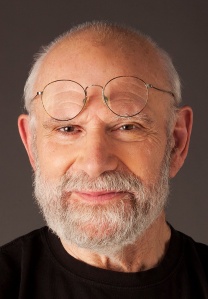Books: “Hallucinations”
December 30, 2012
I have often had the experience, as I am about to fall asleep, of seeing for a fleeting moment the image of a familiar person and hearing that person speak directly to me. Although I am always aware that the image and the voice are not real, they always seem to be real.
Phenomena of that kind are the subject of a chapter — “On the Threshold of Sleep” — in Hallucinations by Dr. Oliver Sacks, the neurologist and author. In this latest of his many books, Dr. Sacks discusses the wide range of circumstances under which some folks (many folks, as it turns out) see things, hear things, even smell things that do not exist in objective reality. These are not sights, sounds, or aromas that the hallucinator voluntarily conjures up in his or her own mind, but rather the products of extraordinary activity in various parts of the brain.
The hallucinations Dr. Sacks writes about may be associated with medical conditions that include epilepsy, narcolepsy, and partial or total blindness, and they may be associated with the use of certain drugs. What they usually are not associated with, Dr. Sacks writes, is mental illness. In fact, many people who experience hallucinations are aware that what appears real to them is, in fact, not real.
The condition Sacks explores first, setting a context for the rest of the book, is Charles Bonnet Syndrome, or CBS, which was first identified by an 18th century Swiss naturalist. Persons with CBS have deteriorating or deteriorated eyesight, and they have hallucinations that in a sense fill in the gap of visual sensory input. These hallucinations may be superimposed on the impaired visual field or they may fill in the blind spot of people who have lost sight in half the visual field. Sacks provides this contrast between hallucinations of this kind and dreams:
“Dreamers are wholly enveloped in their dreams, and usually active participants in them, whereas people with CBS retain their normal, critical waking consciousness. CBS hallucinations, even though they are projected into external space, are marked by a lack of interaction; they are always silent and neutral—they rarely convey or evoke any emotion. They are confined to the visual, without sound, smell, or tactile sensation. They are remote, like images on a cinema screen in a theater one has chanced to walk into. The theater is in one’s own mind, and yet the hallucinations seem to have little to do with one in any deeply personal sense.”
Dr.Sacks has spent his professional lifetime collecting case histories from his own interactions with patients, from his reading, and from correspondents who have shared their experiences with them. In this book as in most of his previous ones, he uses that knowledge to illuminate the growing understanding of the human brain.
Meanwhile, the subject matter of this book reminded me of the poem by Hughes Mearns:
Yesterday, upon the stair,
I met a man who wasn’t there
He wasn’t there again today
I wish, I wish he’d go away…
When I came home last night at three
The man was waiting there for me
But when I looked around the hall
I couldn’t see him there at all!
Go away, go away, don’t you come back any more!
Go away, go away, and please don’t slam the door… (slam!)
Last night I saw upon the stair
A little man who wasn’t there
He wasn’t there again today
Oh, how I wish he’d go away
That poem is called Antigonish because it was inspired by a ghost story in the Nova Scotia city of that name. Mearns, an educator who believed deeply in cultivating the creativity of children, wrote the lines for a play called Psyco-ed while he was a student at Harvard. It was published as a poem in 1922.



December 30, 2012 at 11:06 pm
I remembered your review of Dr. Sacks’ “The Mind’s Eye” last year. This sounds equally absorbing.
My senior year in high school, I was walking through our town’s shopping mall on my way to work at a music store. In the middle of the mall, I heard someone call my name, so clearly and so loudly I expected to turn around and find a friend. No one there. It happened twice more before I got to the store. That was it. I’ve never been hailed by a disembodied voice since.
I didn’t exactly think I was crazy, but I certainly had no explanation. It was so real it couldn’t be denied. I think about it on occasion, but never told anyone about it. Until now.
Love the poem. I remember that from childhood – thoroughly delightful as “The Purple Cow”.
December 31, 2012 at 12:33 am
Dr. Saks discusses the kind of experience you had in the mall and quotes Freud: “During the days when I was living alone in a foreign city–I was a young man at the time–I quite often heard my name suddenly called by an unmistakable and beloved voice ….”